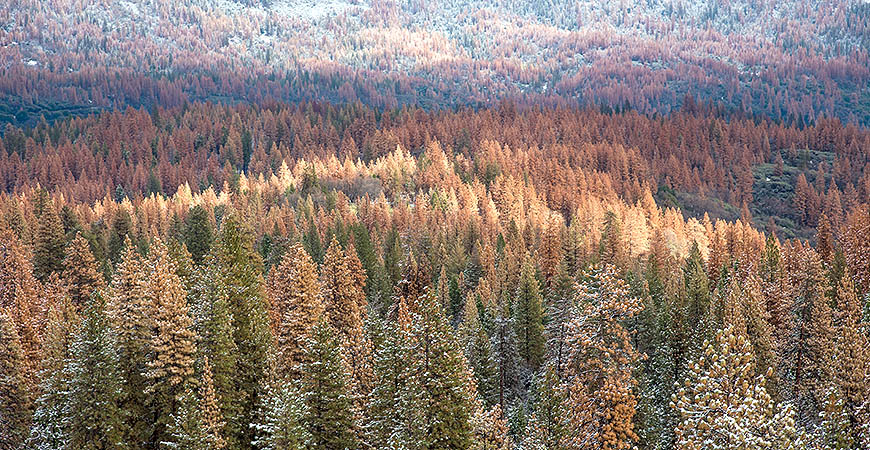
In a paper published in Nature Communications, UC Merced Professor Roger Bales, collaborating with an international team, found that the height of neighboring trees strongly influenced whether a given tree survived California's record 2012-15 drought.
Using high-resolution maps developed from aircraft flights before and after the drought, the team determined the fate of more than 1 million conifer trees in the southern Sierra. They found that trees overshadowed by taller neighbors were less likely to suffer drought stress and die, mostly due to reduced sunlight and thus lower growth and water demand.
A forest with a similar number of trees, but of more-uniform height, whether large or small, lacks this shading by neighbors, and is more vulnerable to competition for water and drought stress.
"The diversity of tree sizes and age groups within forest stands plays a crucial role in maintaining the sustainability of these drought-vulnerable ecosystems," said first author and former UC Merced environmental systems graduate student Qin Ma, now a professor at Nanjing Normal University in China.
Bales added, "In these productive mixed-conifer forests, it is especially important to consider tree-species diversity and canopy structural complexity when thinning out trees to reduce the risk of high-severity wildfire or drought stress, as well as when replanting after disturbance."
While prior research has shown that tree height is a factor in drought vulnerability, advances in high-resolution measurements of individual trees and data analysis enabled the team to show that rather than just increasing with height, drought-related tree mortality decreased with height for small-sized trees, then increased with height for medium-sized trees, and finally decreased with height for large-sized trees.
Co-author and former UC Merced environmental systems graduate student Yanjun Su , who is now a professor at the Institute of Botany, Chinese Academy of Sciences, noted, "Advances in remote-sensing technologies and data analysis enabled us to consider the tradeoff between the need for a tree to move water longer distances from roots to needles as it gets taller, versus the need to move less water when a tree is partially shaded."
Restoring sustainable conditions to California's mixed-conifer mountain forests is a multi-billion per year challenge, Bales said, and the same data and tools used in this research can inform management decisions, and result in greater benefits from those investments.
"While it's known that a forest with a variable canopy structure is better for habitat compared to one with a more-uniform structure, we now know that it also has advantages for drought resilience."




 Public Information Officer
Public Information Officer

